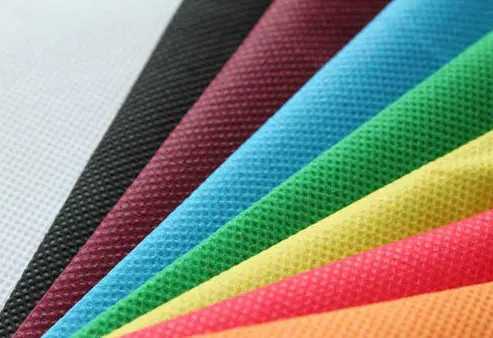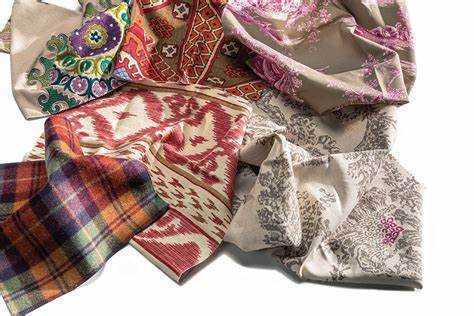There are many ways to detect the composition of textile fabrics. For different ingredients, textile testing equipment manufacturers will have different textile testing methods. There are four commonly used methods: microscopic observation, chemical detection, combustion, and hand-visual inspection.

1. Microscopic observation method: Observation of material is also a very important raw material detection method. The cross-sectional shape of cotton fiber is a round waist with a middle waist; the longitudinal shape: a flat ribbon shape with a natural twist. Hemp (ramie, flax, jute) fiber cross-sectional shape: round or polygonal waist, with a middle cavity; longitudinal shape: horizontal nodes, vertical lines. The cross-sectional morphology of wool fibers; round or approximately round, some with pith; longitudinal morphology, with scales on the surface. Rabbit hair fiber cross-sectional morphology: dumbbell-shaped, with hairy pulp; longitudinal morphology: scales on the surface. Mulberry silk fiber cross-sectional shape: irregular triangle; longitudinal shape: smooth and straight, with stripes longitudinally. Ordinary viscose cross-sectional shape: zigzag, skin-core structure; longitudinal shape: longitudinal grooves. The cross-sectional shape of the rich and strong fiber is less toothed, or round or elliptical; longitudinal shape: smooth surface. The cross-sectional shape of acetate fiber is trilobal or irregular zigzag; longitudinal shape: longitudinal stripes on the surface.
2. Chemical detection method: The chemical detection method of fabric composition is also relatively common. A density gradient solution is required, and the xylene carbon tetrachloride system is generally used. To calibrate the density gradient tube, the precision ball method is commonly used. For measurement and calculation, the fiber to be tested is pretreated with deoiling, drying, and defoaming, and the ball is made into a small ball and put into balance, and the fiber density is measured according to the position of the fiber suspension. The principle of fluorescence is to illuminate the fiber with ultraviolet fluorescent lamp, and identify the fiber according to the different characteristics of the luminescence of various fibers and the different fluorescent colors of the fibers. The fluorescent colors of various fibers specifically show that cotton and wool fibers are light yellow; mercerized cotton fibers are light red.
3. Combustion method: Combustion method is the most common way to identify the composition of clothing fabrics in our daily lives. According to the different chemical composition of the fiber, the combustion characteristics are also different, thus roughly distinguishing the major types of fibers. The comparison of the combustion characteristics of several common fibers is as follows: cotton, linen, viscose, cupro ammonia fiber close to the flame: no shrinkage and no melting; contact with the flame: rapid burning; leaving the flame to continue burning; silk and wool fibers close to the flame and curl and melt; Contact with the flame; curl, melt, burn; leave the flame to burn slowly and sometimes extinguish itself. Polyester fiber melts and shrinks close to the flame; it melts in contact with the flame, smokes, and burns slowly; leaving the flame: continue to burn, sometimes extinguished by itself.

4. Hand visual inspection method: Cotton fiber is shorter and thinner than ramie fiber and other hemp fiber and wool fiber, often with various impurities and defects. The fiber has natural crimp, and the fiber is thin and short, generally about 38mm long, with poor elasticity, soft hand feeling and dull luster. The hemp fiber is thicker, mostly flakes, strong, lack of elasticity and luster, and its fabric feels rough and hard, and has a cool feeling. Wool fibers are more elastic, usually curled, thicker and longer than cotton, and have a warm hand feel. The fabric is not easy to wrinkle when rubbed, and the hand feels smooth and broad. Silk is a long, slender, strong, soft and lustrous fiber. It feels cold when touched by hand. There is no obvious difference in the force used to break the silk in a dry and wet state. Among chemical fibers, only viscose fibers have a large difference in strength between the dry and wet states. Spandex yarn has very large elasticity, and its length can be stretched to more than five times at room temperature.
The 13 common textile fabric testing standardss:
1. GB18401-2003 National Basic Safety Technical Code for Textile Products
2.DIN German Standards Institute
3. AATCC American Association of Textile Dyers
4.AS Australian Standards Association
5. ASTM American Society for Testing and Materials
6.JIS Japan Industrial Association
7. US CPSC US Consumer Product Safety Commission
8.FZ China Textile Industry Association
9.ISO International Organization for Standardization
10. IWS International Wool Bureau
11.BS British Standards Institute
12. IDFB International Down and Feather Bureau
13.CAN Canadian Standards Committee
How to choose a textile testing manufacturer?
In order to reduce the harm of textile fabrics and clothing, textile testing and quality control must be very strict, QINSUN instruments always been committed to innovation and improve product performance and functionality, we have our own textile testing laboratory. Our textile testing equipment and testing methods are in the leading position in the industry and have passed the textile testing certification and iso textile testing standards issued by a number of testing.